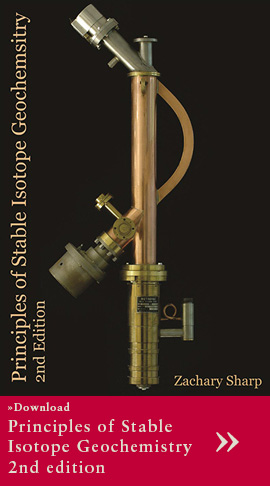Oxygen isotope ratios (16O/18O) have been used in numerous studies of mantle lithologies to estimate 1) the protolith 2) the source of metasomatizing fluids, 3) temperature of formation, and 4) degree of equilibration between coexisting minerals. The δ18O value of mantle olivine comprises a very restricted range (Mattey et. al., 1994), so that even subtle deviations from this ‘canonical’ value indicate some form of contamination. Eclogites span a range of 2–8‰ and suggest an altered oceanic crust or sediment protolith (MacGregor and Manton, 1986). However, the 18O/16O information alone provide limited information. The addition of the novel 17O/16O ratios provide additional constraints on mantle minerals, expanding the isotope data from a one-dimensional line to a two-dimensional field.
Our preliminary results demonstrate the utility of triple oxygen isotope analyses of mantle materials. OPX and olivine mineral separates from spinel peridotites are generally well-behaved for 17O, with Δ' 17O values (see Sharp, 2013 for nomenclature) of -0.05 ± 0.01‰, the same as presumed mantle olivine. We see that CPX is out of δ18O equilibrium in all cases. The Δ18O values for olivine, garnet, OPX, CPX and phlogopite from a granular garnet peridotite (Kimberley, SA) suggest complete 18O/16O disequilibrium, but the Δ' 17O values of all samples are again typical of that of the average mantle. In contrast, a sheared peridotite from the same location has Δ18O values in equilibrium at ~950 °C, but Δ' 17O values that suggest mixing between a low Δ' 17O – low δ18O and a high Δ' 17O – high δ18O component. One mantle eclogite sample, a grospydite from Smyth and Hatton (1977), has a wide range of Δ' 17O values but δ18O values that appear in equilibrium. It has been suggested that the wide range in δ18O values could suggest an origin for the eclogites from subducted altered oceanic crust (MacGregor and Manton, 1986). We are measuring the triple oxygen isotope values of altered oceanic crust in order to identify potential sources for the 17O isotope disequilibrium seen. The Δ' 17O values of these samples can be used to support such an idea. In general, the Δ' 17O values of altered oceanic crust are higher than typical mantle. Low Δ' 17O values may be indicative of subducted sedimentary material.


